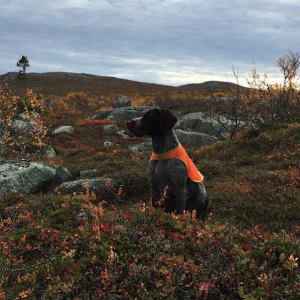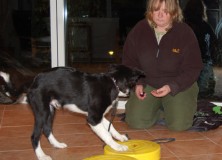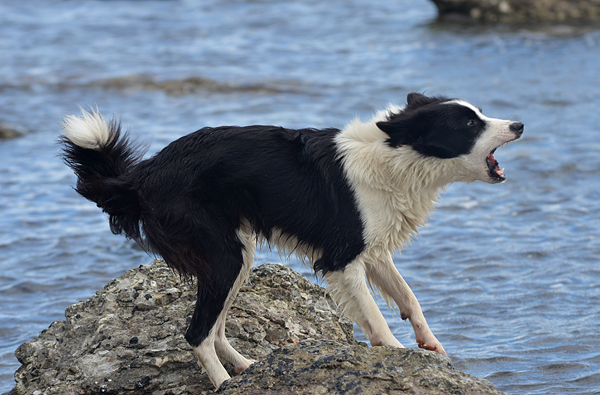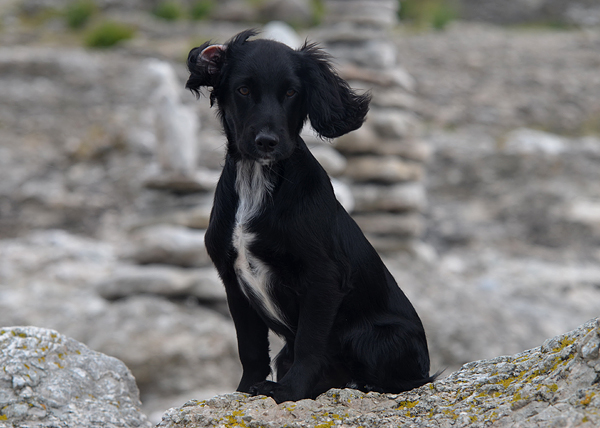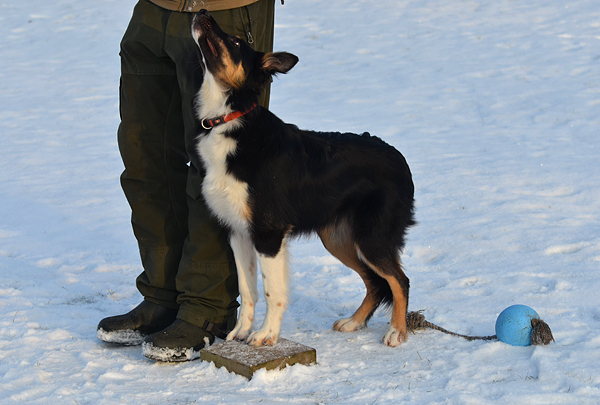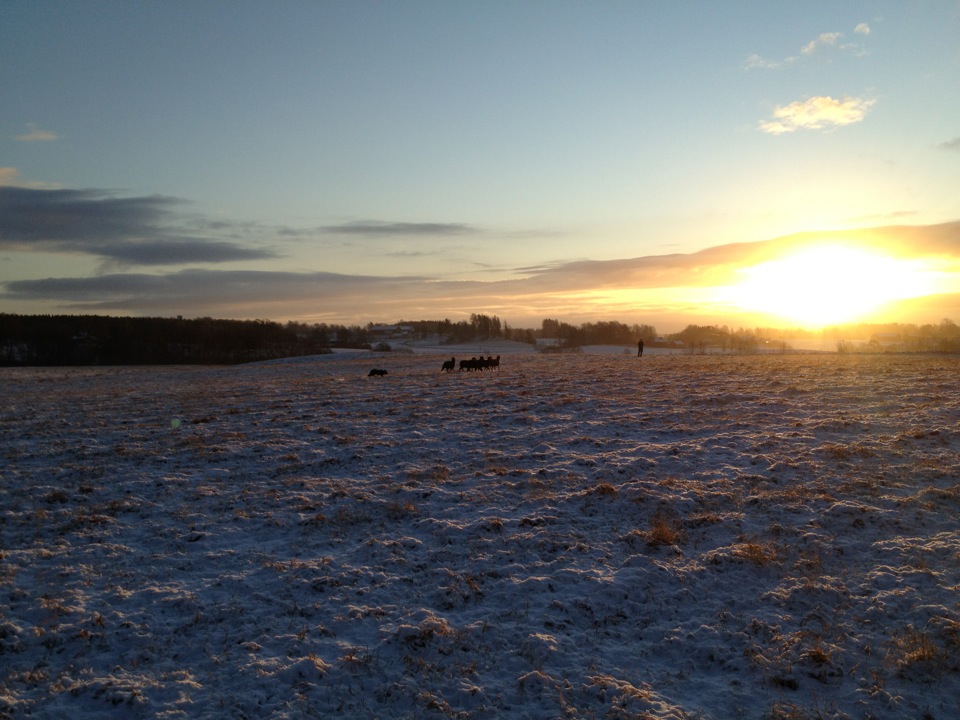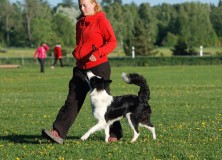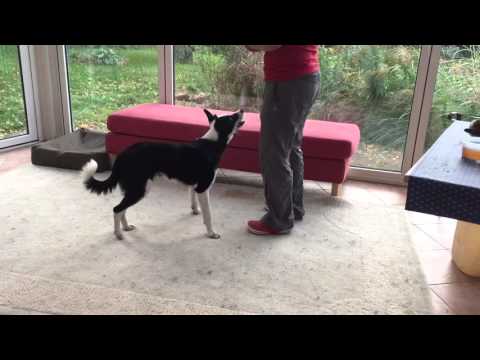
Criteria continued
Bud learned the jumping stand early. I like to teach it to small puppies because they are bouncy and you can often easily capture it by just standing and waiting for it to happen when the puppy has energy and is playful. I don’t care a lot about perfection at this point, I just click and reward any bounce where both front legs leave the ground until the puppy offers the behavior in order to get a reward. I also like to name the behavior early, because I think it’s good to work on stimulus control with my puppy, and they often learn to love this behavior quickly.
I have not planned for Bud to be an obedience dog, but I love to work on obedience behaviors and think they are great for anything I want to do in the future. I’ve used his jumping stand for cue discrimination, and I have added some staying in position after the jump too. But I haven’t really worked on it, and I realized recently that he always moved his back feet counter clockwise on landing. It wasn’t pretty, and he did it every time. And I had rewarded it every time. Now, I decided that I wanted him to stay straight infront of me when doing the behavior, maybe even be able to keep his back feet still and just bounce with his front feet.
If the dog is always performing the behavior in a way we don’t like, it’s not a good idea to just not reward it and wait for perfection. The dog will probably give up in the process. You could chose to reward the better responses, and not reward the ones where he moves his feet the most – but you’re still rewarding something you don’t really like. Another solution is to think about some other behaviors to train that might help with understanding and hopefully bleed over to the behavior in question. That’s what I started by doing. I worked on backing up straight, offering a stand (not a jump, just four feet on the floor) straight infront of me and some rear end awareness and finishes on my right side (moving back feet clockwise).
This helped enough for me to get much better behavior once I started the jumping stand again. There were a lot of offered jumping stands that I didn’t reward, but he did seem to remember the exercises we’d just done when I didn’t reward, and I could jackpot some jumping stands that were much straighter than before. I still rewarded back foot movement (which I don’t really see as a problem) as long as it wasn’t to his right. If I found that he reverted back to his old style, and rate of reinforcement got too low, I would remind him of one of the behaviors used before (often just standing in front of me, or some clockwise pivoting) and then go back to the jumping stand. But most important was criteria – not rewarding what I don’t want, and rewarding all the good attempts.
I made a little video of our training today. He was doing well and had some nice repetitions where he kept back feet still, and even could go from sit to stand with his back feet planted. When I found myself just rewarding many repetitions in a row, I decided to change something – challenge him. The behavior is nice, but it’s not ever finished. Just changing something small can make it a bit harder for the dog and increase his understanding of what we want. I chose to add an open hand with treats to the left. It made it harder, but he worked through it nicely and came out more confident in what I want. I usually don’t want to use a cue for the behavior when I add a challenge like this, so it would have been smarter if I’d let him offer it freely instead. Noted for the next challenge!


